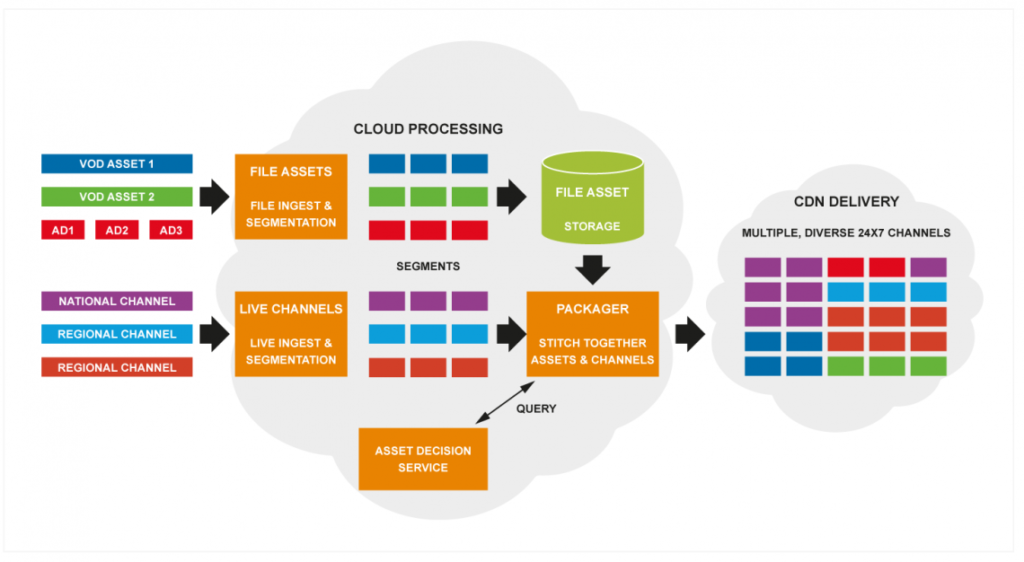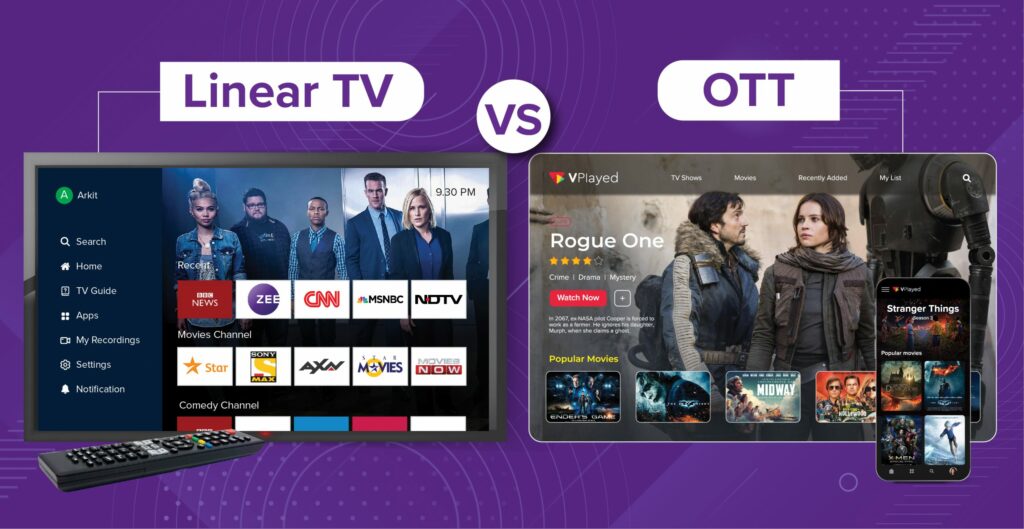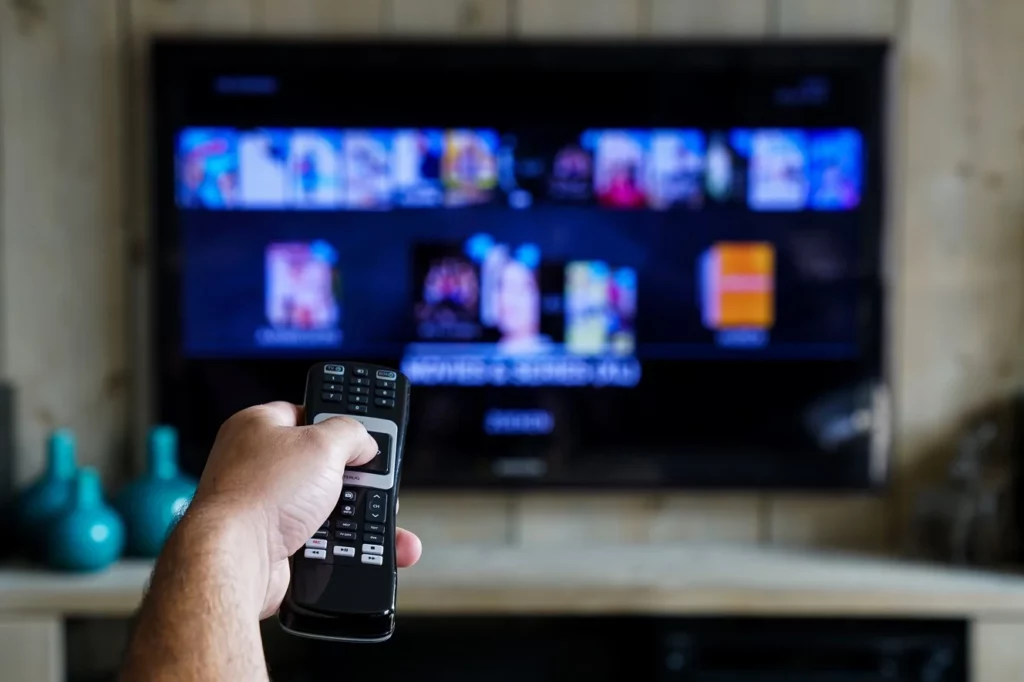The promise of real customization combined with broad market appeal can be fulfilled by FAST. With so many people switching from conventional Pay-TV services to free streaming services, this potent combination can increase advertising revenues.
The main distinctions between FAST and Linear TV require some explanation. After describing the key technical distinctions between the two distribution models in Part 1, this section focuses on some of the difficulties faced by FAST channels and how technology is advancing.
Conciliating Personalized & Viral Content
It is only reasonable to anticipate that all of our future content services will include the ability to customize watching experiences as a default feature. VOD services have become very popular for a very good reason: people enjoy having options and the flexibility to make their own decisions. FAST channels will strive for personalization by providing us with the content we want to view, when and how we prefer to watch it. This is a natural human desire.

However, it is also true that we all naturally desire to belong to a group, no matter how large or small. We typically prefer to share, comment on, view, and discuss the media we consume as a group. We create buzz and hype for popular content because of this need for community, which also explains why popular content attracts the largest crowds and, consequently, the highest advertising revenues.
The biggest marketers want to spend their money on these viral viewing opportunities in order to reach the broadest possible audience. The fast-moving consumer goods, retail, automotive, food, and beverage sectors are the main advertisers during the biggest TV events, which makes sense. Can the FAST delivery model be successful even for the biggest viral events, even though it is a model that potentially can achieve very specific levels of personalization?
Related: Part 1: What Are The Real Differences Between FAST And Linear TV?
Personalization
From a technical standpoint, FAST makes it much simpler to offer particular content to suit a person’s preferences. It is possible to mix content and ads to suit a viewer’s particular tastes because a single stream can be tailored to a viewer (or relatively small group of viewers). A central storage system’s material and advertisements can be delivered to viewers on demand and at convenient times. Additionally, since streaming content employs pay-as-you-go internet-based technology, this can be done effectively and with little initial outlay on the part of the content provider.

It is accurate to state that the personalization opportunity is made possible by the most recent technical advancements in content distribution. FAST requires an ABR encoding, packaging, and origin platform as well as one or more CDNs as opposed to investing in hardware-based encoding and compression solutions and satellite capability for a linear channel, which can cost millions of dollars, euros, or other currencies annually. The cost to set up and maintain this software-defined infrastructure, which runs on common COTS hardware and is offered on a self-service basis by the big cloud providers or by media-focused managed service companies, is significantly lower than that of traditional Linear TV. This makes it easier for smaller audiences to access material, which is ideal for the FAST model.
We now have new methods to build on-demand streaming channels in the final distribution technology domain (rather than in the contribution technology domain), which is setting the groundwork for truly personalized linear channels. This is made possible by advancements in cloud-processing. This method stitches together material that has already been pre-encoded and pre-segmented. Because the distribution bitrates are lower than in the baseband contribution domain, less computation is needed, and the process is more effective, resulting in a significantly reduced cost of channel production.

“Perhaps our industry has been a little over-excited about the re-invented business model called FAST and forgotten about the technology enabling a new era of TV,” says Johan Bolin of Agile Content. Technology that allows very cost-effective channel curation and a cost structure based on viewing rather than high fixed costs per channel is at the heart of FAST. No matter how we employ this technology to produce TV, whether it is free or not, or whether it is ad-supported or not, streaming TV is unquestionably doing so to provide a more viewer-centric experience.
Having Scheduled Content Is Important
What does personalization mean for producing the viral experiences that define linear, appointment-TV? Personalization sounds wonderful.
Whatever method is used to establish a FAST channel, scheduled content is an important factor to take into account. FAST needs to do the same thing that linear TV and SVOD platforms do to generate big concurrent audiences for pre-recorded content. If FAST channels are successful in doing this, they will be able to offer large, usually addressable audiences as well as effective audience segmentation.
Let’s think about the three basic forms that FAST can take. First, it might be a compilation made with VOD resources. The second option is a selected, pre-planned lineup of programs. Third, either of the first two options may be used, with Live material included.

Things are more interesting because of live material. How do bigger Live events happen in what might be a relatively specialized FAST channel? Should they enter in concurrently across several channels, much like “breaking news” alerts? Should they just be planned like they are now in the EPG? Is it possible to make an event that is scheduled on one person’s personalized channel shareable or even visible on another person’s channel? As we contemplate how FAST could eventually replace Linear TV, the community-based viewing experience for FAST channels is crucial.
Because the lean-back, EPG-based linear viewing paradigm is so well-known to us, some industry experts anticipate that linear viewing experiences will transfer to FAST services. The same experts believe that FAST channels can experiment with viewer preferences and rapidly scale up the most successful models by utilizing the adaptability of technology. They also recognize that FAST channels will need to adopt some Linear TV practices, such as preserving brand security with robust delivery and implementing Linear TV standards for loudness control and ad delivery frequency.
Streaming Capacity
It appears that the distribution of content delivery methods will be reasonably even over the short term (i.e., the next five years). With sizable percentages of users on each technology platform, terrestrial over-the-air, CableTV, IPTV, satellite, and OTT are likely to coexist. The network’s ability to manage the demand will be one of the key variables to take into account in order to produce the viral content and sizable prime-time audiences for a FAST channel, though, as the pendulum swings toward an all-IP world and the OTT model of content distribution scales up to surpass the others.

The peaky viewership patterns of major live events, which are watched by significant percentages of the populace worldwide, are already taxing CDNs. The availability of broadband is usually increasing to meet demand, with many developed nations now averaging over 50Mbps per household. Theoretically, this can manage multiple HD or UHD streams simultaneously—enough for almost every home.
However, the capacity of CDNs’ Edge networks and ISPs’ core and peering networks is typically insufficient to manage the number of viewers during prime time, at least not at the bitrates and latencies necessary to please those watching on big-screen TVs. This topic will be covered in more depth in a separate article, but it may limit the ability of FAST channels to reach sizable prime-time audiences.
The “A” in FAST
There is currently little information accessible regarding the efficacy and worth of advertising space in FAST. The rising channel count that increased from almost 0 to over 1500 in the USA alone since 2019 shows the increasing worth of FAST as a whole. The success of FAST is also being fueled by subscription fatigue. According to TiVo’s Q4 2022 report, the typical American household had 9 different methods to access content.
Leading content providers are experimenting with and making investments in various content delivery strategies to increase profits. The FAST model has the benefit of delivering more audience user data than is offered by linear channels, increasing consumer profile exposure and, as a result, the value of advertising inventory. Studies frequently note that delivering an advertisement to the right audience in the right situation increases the efficacy of the advertising. FAST assists marketers in achieving this goal.

On the value of advertising in FAST versus Linear TV, media guru Evan Shapiro shared his thoughts with us. “Linear networks have a smaller set of access points for advertisers to deal with when compared with FAST,” he said. Because of this, purchasing ad inventory is easier and there are fewer partners with whom to split revenue (namely, the media firms and biggest pay-TV platforms).
On the other hand, FAST networks are accessible on a variety of device platforms, including Roku, Samsung, LG, and Vizio, as well as aggregator platforms, including Pluto, FreeVee, Sling, Xumo, Local Now, and many more. In general, both the platforms and the channels offer the available ad inventory. Even though audience monitoring on each platform can be precise, deduplicating viewers when aggregating across platforms is very challenging. Additionally, buying advertising is more difficult. The confusing array of available platforms and the plethora of back-end programmatic ad platforms can be frustrating for advertising companies. To reach its maximum monetization potential, FAST needs to catch up to the developed Pay-TV market in this area.
Conclusion
FAST has rapidly expanded in response to a clear consumer demand for a cost-free, relaxed watching experience that is more accessible and individualized than linear TV. Given its unique market dynamics and long-dominant Pay-TV platforms, the USA has seen the fastest rise in FAST services. Currently growing in Europe, FAST. According to Amagi, there was a 90% increase in Europe’s FAST channel count between Q3 2021 and Q3 2022, a 50% increase in hours watched, and a 100% increase in ad impressions.
One could argue that reaching the largest audiences possible through the most comprehensive TV services is the best way to increase brand recognition. However, it could be claimed that speaking to a very specific and well-defined audience is best for selling goods and services. By addressing both needs through a single medium, FAST offers advertisers a potent new method to boost their marketing ROI.
Technically speaking, due to technological advancements, we are just beginning a personalization revolution. This will go on, but FAST will need to find out how to combine individual personalization and mass-audience standardization. In order for FAST to fully replace Linear TV, sufficient network capacity must be available.
The idea of FAST can feel either very similar or very different to Linear TV, depending on your age and point of view on the television industry. However you feel about it, we can at least come to the conclusion that there is room in our media ecosystem for free, ad-supported services that can reach a single user just as efficiently as a mass audience.
Download The Radiant App To Start Watching!
Web: Watch Now
LGTV™: Download
ROKU™: Download
XBox™: Download
Samsung TV™: Download
Amazon Fire TV™: Download
Android TV™: Download

